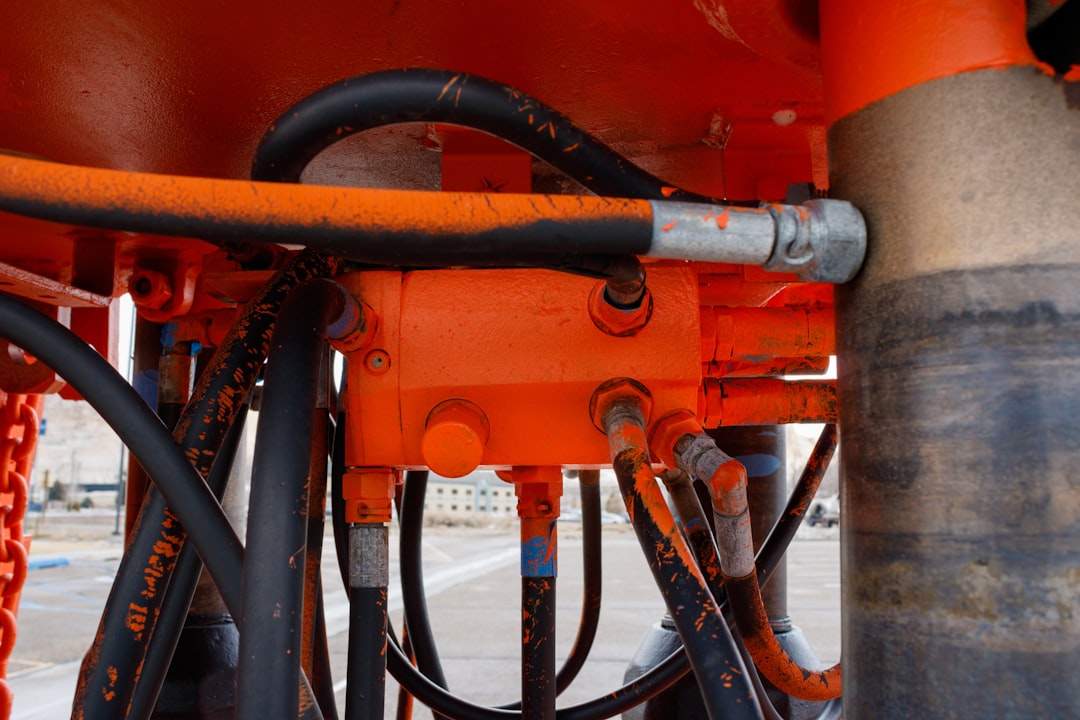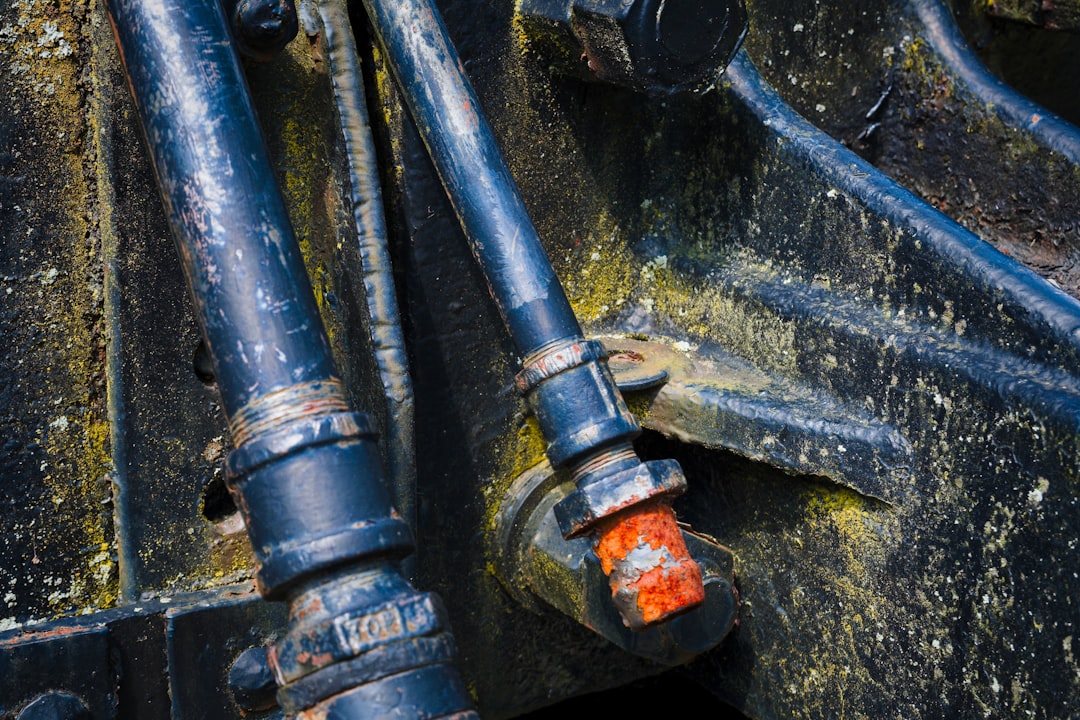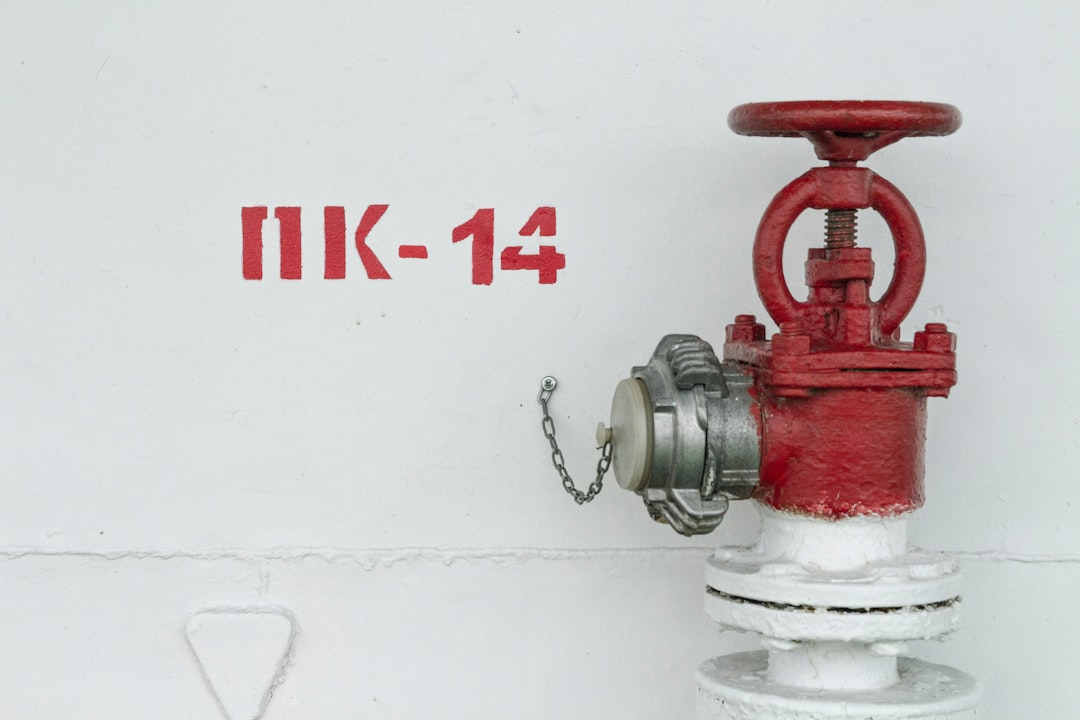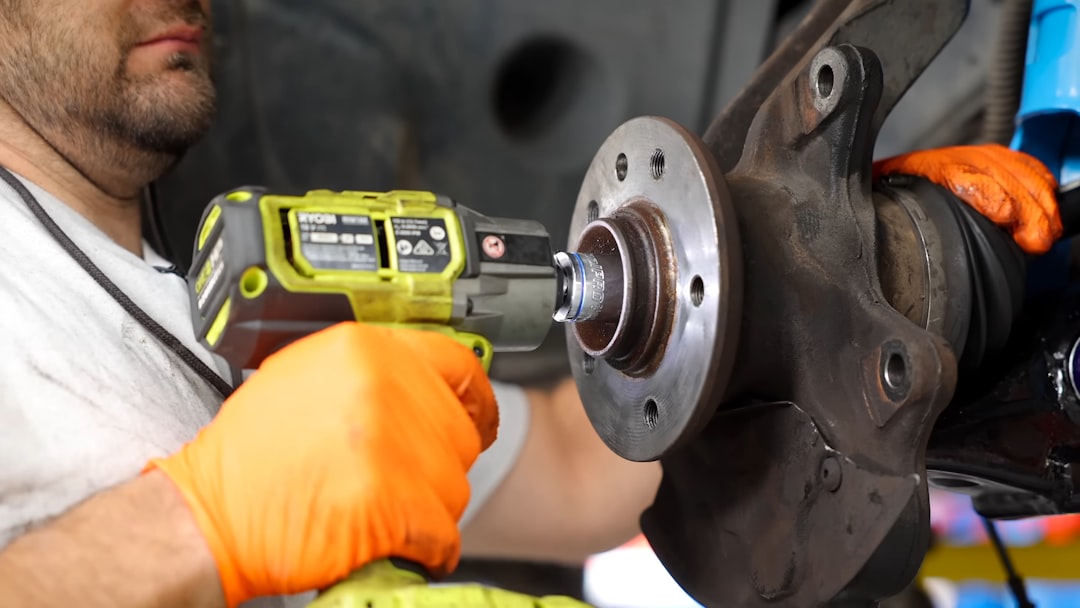

Engage prospects with a scan and streamline customer engagement with FREE QR code marketing tools by Sona – no strings attached!
Create a Free QR CodeFree consultation

No commitment

Engage prospects with a scan and streamline customer engagement with FREE QR code marketing tools by Sona – no strings attached!
Create a Free QR CodeFree consultation

No commitment
In today’s digitally driven world, QR codes have evolved from a novelty to a strategic powerhouse in bridging offline engagement with online action. For hydraulic jack repair services, QR codes represent a practical and efficient way to boost customer service responsiveness, streamline repair requests, and provide instant access to maintenance guides and troubleshooting resources.
Manual processes such as printed service forms, static business cards, or unwieldy maintenance checklists often create friction between issue detection and service resolution. Essential details can get lost in translation, customer requests go untracked, or high-value prospects miss out on follow-up simply because there is no seamless way to capture intent. QR codes offer a solution, enabling shop owners, technicians, and customers to connect to the right digital content with a single scan, eliminating confusion and accelerating repair workflows.
By leveraging QR codes, hydraulic jack repair services can ensure customers, field teams, and partners instantly receive up-to-date repair instructions, submit service requests, and access critical safety information. This reduces the risk of missed opportunities, helps capture new leads, and supports proactive service follow-up for measurable business growth. With a platform like Sona QR, teams can also track scans, update links in real time, and attribute outcomes to specific placements or campaigns through offline attribution for continuous improvement.

QR codes bridge the gap between physical touchpoints and digital outcomes, making it easier for hydraulic jack repair services to achieve business goals like faster service intake, improved follow-up, and actionable troubleshooting support. When a customer encounters a malfunctioning jack on a shop floor or in a facility, a clearly labeled QR code gives them instant access to the right path: a diagnostic checklist, a how-to video, or a rapid service intake form that routes to your team.
Outdated analog workflows create avoidable delays. Paper forms are misplaced, voicemail messages are incomplete, and static PDFs go out of date. By digitizing these interactions, you create a more reliable and measurable experience. A QR-enabled intake form can capture essential details such as model number, symptoms, photos, and contact information. A dynamic QR code linked to a living repair guide ensures every technician sees the latest steps and safety notices without reprinting manuals.
Here is how to address typical bottlenecks:
Example: Instead of filling out a paper form to request a repair, customers scan a QR code on their equipment, prompting a mobile-friendly intake form that auto-routes requests to your team. This reduces delays and manual errors, ensuring no high-intent service need goes unnoticed. With Sona QR, you can update destinations without reprinting stickers and track which locations or equipment models generate the most requests.
A centralized platform also makes every code trackable, editable, and connected to your reporting tools. Providers can analyze customer needs, uncover recurring issues by model or environment, and identify points where timely follow-up could recover missed opportunities. Over time, scan patterns illuminate where to place additional codes, what content resonates most, and which offers drive repeat business.

Hydraulic jack repair often suffers from missed prospects, anonymous web visitors, and paperwork that slows follow-up. QR codes bridge the offline-to-online gap, streamlining maintenance and service requests from the physical world into an organized, measurable workflow. They turn shop signage, serviced equipment, and printed materials into active gateways that capture intent and route it to the right next step.
Technicians and customers can see your print materials, jack equipment, or shop signage and act immediately via a quick scan, avoiding lost leads and improving response times. This immediacy prevents stalled conversations and reduces the number of repeat calls caused by incomplete information. It also allows small teams to scale service without hiring additional coordinators to transcribe or chase down details.
Hydraulic jack repair teams often face scattered data and generic analytics. The right QR formats help capture precise insights, enabling relevant follow-up and smoother workflows across intake, troubleshooting, and post-service communication. Choosing the correct destination for each use case ensures customers get immediate value from the scan.
In practice, dynamic web links and mobile repair forms provide the best results for this vertical. They allow you to change destinations as your content evolves, test different experiences, and keep documentation aligned with the latest procedures. A single dashboard for all formats, such as Sona QR, makes it simple to manage campaigns, track performance, and sync outcomes with downstream tools.

Lost opportunities in hydraulic jack repair often come from a lack of visibility into when customers take action. QR codes work best at the moments and touchpoints where questions arise, problems surface, or purchases happen. By placing codes strategically on equipment, paperwork, and in the work environment, you invite real-time engagement that translates into service volume and repeat business.
To uncover growth, audit your current materials and environments. Identify any surface that is seen frequently by customers or staff where a decision or task follows. Add a QR code with a clear call to action that aligns with the user’s intent at that moment, and instrument it with dynamic tracking. Patterns in the data will quickly reveal where to double down.

Hydraulic jack repair services can use QR codes across the customer journey: at the moment of failure, during service intake, and through follow-up. Putting the right action behind each code aligns the user’s need with your business objective, which increases conversion and customer satisfaction.
Below are three foundational use cases that match common interactions in this industry. Each is straightforward to deploy and delivers compounding value when integrated with analytics and CRM workflows.
Each QR code scan is a signal that captures intent, context, and behavior. By deploying multiple QR codes across touchpoints and destinations, you can segment your audience automatically and feed that data into precise retargeting and follow-up campaigns. This is particularly useful in a service environment where repeat maintenance and recurring contracts drive profitability.
Segmentation can be simple to start. Use one set of codes for first-time service requests, another for warranty claims, and a third for preventative maintenance sign-ups. Over time, enrich these segments with attributes such as location, equipment model, or industry vertical to deliver targeted messages that resonate with your audience’s specific needs.
QR codes are more than convenient links. They act as connectors across your offline and digital campaigns, enabling real-time engagement and richer data collection across every channel. In an industry where many interactions begin offline at a job site or service counter, QR codes provide the shortest path to action and the clearest path to attribution.
By standardizing QR usage across channels, you create a connected funnel that moves customers from discovery to decision. Every scan produces a measurable signal, while dynamic destinations let you refresh content for new promotions, updated safety notices, or seasonal offers without reprinting.
A well-executed QR campaign moves customers from problem to solution in fewer steps, while giving your team the data needed to optimize. Use the following steps to go from planning to measurable results, and adapt each step to fit your service workflows and operating context.
Clarify the outcome you want to achieve before generating any codes. Common goals in hydraulic jack repair include increasing service requests, accelerating diagnostics, promoting preventative maintenance, and capturing post-service feedback.
Select the QR code format that matches your use case and the need for flexibility. Most service scenarios benefit from dynamic codes due to frequent updates and the need for tracking.
Design influences whether people scan and how well the code performs in real-world conditions. Usability is crucial in shops and industrial facilities where lighting, distance, and device handling vary.
Roll out codes where they can generate the most value. Stagger deployment to learn what works and refine your placements and messages.
Measure what matters and iterate quickly. The goal is to move from scans to actions and from actions to revenue, while improving customer experience.
Services often suffer from fragmented analytics that make revenue attribution difficult. QR codes, when powered by a platform like Sona QR, capture real-world engagement and connect it to your digital funnel. This provides a clear line of sight from a scan to an outcome such as a booked repair, an approved estimate, or a signed maintenance agreement.
The key is to instrument both the code and the destination. Use unique codes per placement, append UTM parameters to destinations, and ensure forms and booking pages pass source data into your CRM. Sona.com extends this by enabling identity resolution and multi-touch attribution that link anonymous scans and subsequent web activity to known contacts and accounts.
QR code success depends on thoughtful deployment and consistent optimization. Focus on the highest-intent touchpoints first, make the call to action unmistakable, and reduce friction in the destination experience. Train staff to promote QR options and explain the benefit to customers.
As you scale, standardize your approach. Use naming conventions for codes, centralize management in Sona QR, and build reporting dashboards that combine scan data with conversion and revenue insights. This discipline ensures you are not only generating engagement, but also converting it into real business outcomes.

Hydraulic jack repair businesses, large and small, are already capturing measurable gains by using QR codes thoughtfully. The following examples illustrate how straightforward placements and relevant destinations can double scan volume, raise booking rates, and improve post-service engagement.
Pair these ideas with your branding and local context, then use dynamic links to iterate rapidly. The most successful teams treat QR campaigns as living programs that are tuned based on real behavior, not set-and-forget stickers.
Success hinges on a few best practices that improve scannability, relevance, and conversion. Use dynamic codes when content or promotions change frequently, and static codes when the asset is truly evergreen. Always pair a code with a benefit-driven call to action, not just a generic label.
Avoid hard-to-scan placements such as low-contrast surfaces or curved areas with glare. Test codes at actual distances and lighting conditions where they will be used. Most importantly, make sure the destination is mobile-first, concise, and immediately helpful, since most scans occur on a phone in the field.
QR codes are more than a shortcut; they are a strategic lever for operational improvement. For hydraulic jack repair services, they turn service counters, equipment, and printed materials into actionable digital entry points, making every customer interaction visible and trackable. The result is faster service cycles, stronger customer relationships, and a steady stream of data that powers smarter decisions.
QR codes are more than a shortcut. They are a strategy. For hydraulic jack repair services, QR codes unlock the ability to turn every physical surface into a digital entry point and every moment of interest into a moment of action. The trust and responsiveness you build by removing friction carry through each step of the customer journey, from the first scan to a long-term maintenance partnership.
Here is what they deliver:
With Sona QR, start creating QR codes for free and scale with confidence. Use Sona QR to manage dynamic destinations, run A/B tests, and integrate with your CRM. Use Sona.com to unify touchpoints, resolve identities, and attribute revenue with clarity. Start by tagging your most common offline assets, then expand based on what the data shows. In weeks, you will see where interest concentrates, which messages convert, and how to turn scans into measurable results.
QR codes have revolutionized hydraulic jack repair services by transforming how technicians and customers access vital information and support. From enabling instant access to repair manuals and service histories to streamlining appointment scheduling and parts ordering, QR codes enhance operational efficiency while elevating the customer experience. Imagine technicians scanning a code on-site to instantly retrieve diagnostic guides or customers effortlessly accessing warranty details — all driving faster, more accurate repairs and stronger client trust.
With Sona QR, you gain the power to create dynamic, trackable QR codes that can be updated instantly without the need to reprint labels or manuals. This flexibility means you can continuously improve service workflows, monitor scan activity for actionable insights, and ultimately connect every interaction to increased customer satisfaction and retention. Start for free with Sona QR today and unlock the full potential of QR codes to streamline your hydraulic jack repair services and drive measurable growth.
You can find reliable hydraulic jack repair services by scanning QR codes on equipment, invoices, or signage that link to service request forms, or by searching digital platforms that partner with repair providers and use QR-enabled workflows for faster service intake.
Common issues include malfunctions such as pressure loss, leaks, and safety concerns that require diagnostics, troubleshooting, and maintenance to ensure proper operation and compliance.
Signs your hydraulic jack needs servicing include difficulty lifting, unusual noises, fluid leaks, decreased pressure, or failure to hold load safely, which can be quickly assessed using QR code-linked troubleshooting guides.
The article does not specify repair costs, but using QR codes to request service helps streamline intake and may reduce delays and errors, potentially lowering overall repair expenses.
Hydraulic jack repair kits and parts can be found through suppliers that provide QR codes linking to compatibility checkers, reorder pages, or spare parts packaging for easy procurement.
Use Sona QR's trackable codes to improve customer acquisition and engagement today.
Create Your FREE Trackable QR Code in SecondsJoin results-focused teams combining Sona Platform automation with advanced Google Ads strategies to scale lead generation

Connect your existing CRM

Free Account Enrichment

No setup fees
No commitment required

Free consultation

Get a custom Google Ads roadmap for your business






Launch campaigns that generate qualified leads in 30 days or less.
